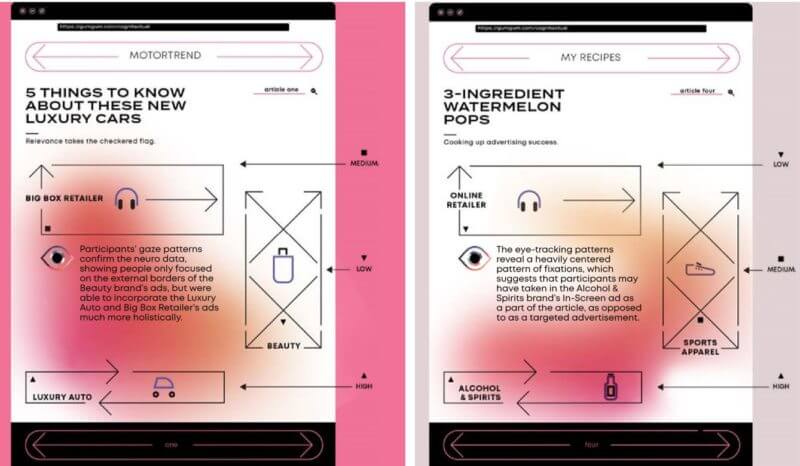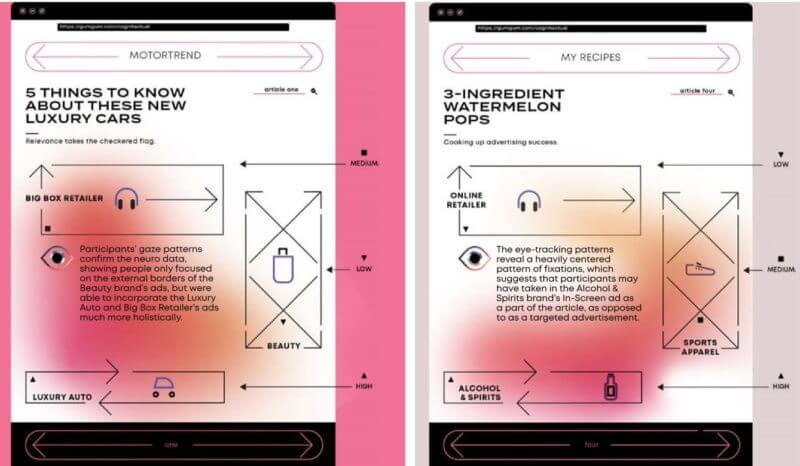What’s old is new again. Contextual advertising has come back on marketers’ radar as data privacy regulations (GDPR and CCPA) and browser crackdowns on cookies greatly limit how data and tracking can be used for targeting digital advertising.
A new study aims to demonstrate how far contextual advertising has evolved in the age of machine learning and natural language processing (NLP) as an effective ad targeting method.
Methodology. The study was designed by GumGum, a contextual advertising company that uses computer vision and NLP to analyze the text, images and videos that appear on a web page (yes, it has skin in this game) and conducted by neuroanalytics company SPARK Neuro.
Researchers used biometric sensors to monitor the participants’ brain activity, gauge their emotions and reactions, evaluate attention, and measure their skin response to stimuli as they were asked to read six articles on different topics. The small test involved 60 participants from the U.S., U.K. and Japan.
Each article had three ads that had relevance to the article ranging from high to low. An article about soccer had ads for soccer apparel, beverages and electronics, for example. The placement of the most relevant ad varied across the articles. The researchers then conducted in-person interviews with the participants.

The findings. Overall, the contextually relevant ads generated 43% more neural engagement and 2.2 times better ad recall, according to the study. They were also somewhat (10%) more engaging than the article content overall. Finally, the study concluded that the contextually relevant ads inspired a statistically significant increase in purchase intent.
This study did not look at performance metrics such as click-through or conversion rates.
“Yet content isn’t the only context to consider: The media platform, device, time and even location where consumers view an ad can also affect their response to it,” the study notes.
Quoting Horst Stipp of the Advertising Research Foundation in the Journal of Advertising Research, the study concludes: “If marketers understand their specific targets’ affinity to the content with which their consumers engage, as well as the role of other contexts—such as other media platforms, time and place—there are real opportunities to enhance the effectiveness of advertising messages.”
Why we care. Marketers are being forced to re-evaluate their targeting strategies as the third-party data ecosystem is getting up-ended. This study indicates the loss of data for targeting might not be as catastrophic as many fear. It also concludes that it’s not as simple as pairing a cat food brand with an article on cats. (For one, reach will be too limited for mass marketers.) But context beyond the content itself matters, too.
The post The new contextual ad targeting works, study says appeared first on Search Engine Land.
Source: IAB

